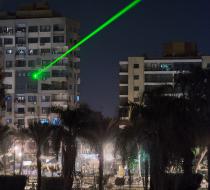"From Wall Street to Cairo", featuring Fire in Cairo 1 Favorite
Matthew Connors spent much of 2012 in Lower Manhattan making portraits of the protesters in the Occupy Wall Street movement. But a chance encounter during the course of that project made him do a 180-degree turn after meeting some Egyptian activists who had participated in a different uprising: the Jan. 25 revolution that led to the ousting of President Hosni Mubarak. They convinced Mr. Connors that there was a more important struggle worth covering.
“I really just wanted to insert myself into the city and into that current of history and try to understand it from the ground up, as best I could,” Mr. Connors said.
He traveled to Cairo in early 2013, arriving a few weeks before the second anniversary of the Jan. 25 revolution, when tension and discontent were still palpable despite the recent regime change. Over the next several months, Mr. Connors witnessed continual unrest stirred by the Tamarod protest movement opposing Mr. Mubarak’s successor as president, Mohamed Morsi, who himself was removed from power in July 2013.
Mr. Connors recently released a book of photographs from his time in Egypt: “Fire in Cairo,” which won the 2016 International Center of Photography’s Infinity Award for Artist Book. The book is a collaboration with the publisher, Bruno Ceschel, and the designer, Antonio de Luca of The New York Times.Mr. Connors said he did not have a calculated strategy going in. So he began making portraits of citizens and revolutionaries, just as he had done in New York’s Zuccotti Park, which proved an effective means of connecting with, and earning the trust of, skeptical Egyptians.
As Mr. Connors grew more familiar with Cairo’s rhythms, he began visualizing the city as a giant studio for social change. In addition to depicting the human faces of revolution, “Fire in Cairo” features scenes and elements directly related to the upheaval, including barricades on the street, layers of spray paint, clouds of tear gas, blazing fires, a collage of laser beams, and other striking images, including a blood-splattered wheel and helicopters that appear to be flying upside down.
“For me the complexity of the situation and my relationship to it invited more of a metaphorical explanation,” Mr. Connors said.
It wasn’t his intention to capture the dynamism of events, or even to create newsworthy images. Instead, he sought different ways of rendering the events that were unfolding by finding the visual and atmospheric residue of the continuing resistance. The photographs vary in size, decreasing or increasing depending on which direction the reader pages through the book, with the faces of his portrait subjects becoming increasingly shrouded to reflect the escalating conflict.“The ground felt like it was continually shifting between competing forces of the revolution,” Mr. Connors said. “That largely led to the kind of images, and the kind of book I sought to make. So I wanted the book itself and the format — the layout, the sequence — to all echo that.”
“Fire in Cairo” reflects Mr. Connors’s tumultuous, disordered and very subjective experience in Egypt, meant to illustrate his concerns about revolution, and the documentation of a revolution.
“What I was hoping to do with my images was generate some sort of emotional identification that could be a key to future political participation,” he said.









